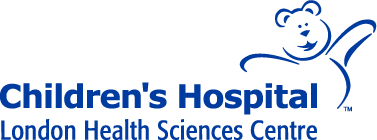Disclaimer to the Online Edition
This Manual has been designed for use in the NICU at London Health Sciences Centre (LHSC), London, Ontario, Canada, and represents clinical practice at this institution. The information contained within the Manual may not be applicable to other centres. If users of this Manual are not familiar with a drug, it is recommended that the official monograph be consulted before it is prescribed and administered. Any user of this information is advised that the contributors, Editor and LHSC are not responsible for any errors or omissions, and / or any consequences arising from the use of the information in this Manual.
propranolol
Indication
- Treatment of hypertension
- Used in the management of cardiac arrhythmias (such as supraventricular tachycardia) and tetralogy of Fallot cyanotic spells
- Treatment of proliferating infantile hemangioma
Dosage Guidelines
Hypertension:
- Oral: 0.25-0.5 mg/kg/dose q8h, increase dose slowly as needed and monitor heart rate. Usual maximum daily dose is 5 mg/kg/day
- IV: Initial 0.01 mg/kg slow IV direct over 10 minutes (by MD only), may repeat every 6 to 8 hours as needed, increase slowly to a maximum dose of 0.15 mg/kg/dose every 6 to 8 hours
Cardiac arrhythmias and tetralogy of Fallot cyanotic spells:
- Oral: 0.5-1 mg/kg/dose for 1 dose, then 1 mg/kg/dose every 6 to 8 hours
Infantile Hemangioma:
- Oral: Initial 0.25 mg/kg/dose q12h on day 1, after day 1, increase to 0.5 mg/kg/dose and then increase by 0.25 mg/kg/dose after every 2-4 doses if blood pressure, heart rate and glucose normal up to a maximum of 1 mg/kg/dose
Administration
- Oral – administer immediately prior to or after a feed to reduce the risk of hypoglycemia
- IV direct at a rate not to exceed 1 mg/minute
To prepare propranolol INJ for doses less than 0.05 mg:
- In a 1 mL syringe, draw up 0.1 mL of propranolol 1 mg/mL injection.
- In a 3 mL syringe, draw up 0.9 mL NS.
- From the 1 mL syringe, inject 0.1 mL of drug into the 3 mL syringe.
Total volume = 1 mL of a 0.1 mg/mL solution. Mix well and discard unused diluted solution
Adverse Effects
- Hypoglycemia, hypotension, bradycardia, vomiting, diarrhea, bronchospasm, lethargy, cold extremities
Comments
- Monitor blood pressure and heart rate hourly for the first 2 hours after initiating propranolol or any dose increases
- Consider blood glucose monitoring 1 hour post each dose for 24-48 hours following initiation or dose titration
- Oral to IV dose conversion is 10:1
- Use with caution in presence of heart failure, renal or hepatic disease
- Use is not recommended in neonates with chronic lung disease, as bronchoconstriction may occur; use with caution.
Supplied As
- 1 mg/mL, 1 mL vial
- 5 mg/mL oral suspension
References
LexiComp Sick Kids, LexiComp Pediatric and Neonatal, CHEO NICU Monograph
